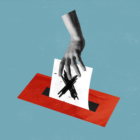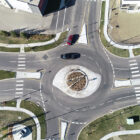Conversations
St.Albert Liquor Stores
By Paula E. Kirman
January, 2023
Do more liquor stores benefit the community?
You’ll find a liquor store on every corner in Alberta – at least, that’s how the saying goes.
Of course it’s an exaggeration, but they are everywhere. Exactly how many liquor stores exist in St. Albert depends on who you ask. As of late September 2022, 35 retail liquor stores licensed by the AGLC (Alberta Gaming, Liquor and Cannabis) dotted the civic landscape.
Supply & Demand
However, Michael Erickson, Director of Economic Development, City of St. Albert, notes that the AGLC’s list of retail liquor licenses in St. Albert includes businesses the municipality does not recognize as retail liquor stores, such as breweries and distilleries, which it classifies as manufacturing. The City counts 29 stores as retail liquor businesses−still a lot, compared with 25 convenience stores and 19 pharmacies/drugstores.
“It’s important to emphasize that the quantity of any type of retailer is driven by supply and demand in our largely free-market system,” says Erickson. “The City has no bylaws or regulations that limit the number of businesses of a certain type that may open within St. Albert.”
In 1993, Alberta became the first Canadian province to privatize retail liquor. It’s still the only fully-privatized province where liquor is concerned, although Saskatchewan will fully transition liquor retailing to the private sector in 2023.
Kathy Hibbs, Acting Senior Director, Liquor Services, AGLC, explains that deregulation means “liquor retailing, warehousing, and distribution are all managed by the private liquor industry.”
The current system gives the AGLC the task of legally importing liquor into Alberta, while registered suppliers and agents handle responsibilities that include ordering, consolidating, shipping, and marketing liquor. Additionally, manufacturers and suppliers go through the AGLC to sell liquor products to businesses (or licensees), who in turn sell those products to consumers.
More Competition & Variety
The move has since contributed to the industry’s growth to nearly $2.8 billion in beverage sales in 2021, according to Statistics Canada. Prior to deregulation, 208 retailers sold liquor in Alberta. Now 1,500 offer 32,000 liquor products (up from 2,200). Additionally, 249 Alberta-based liquor manufacturers (such as brewers and distillers), spiked upward from 31 outlets during that same period.
“In other provinces, the liquor board determines what products will be sold in their stores. In Alberta, there is no barrier to product entry, which has resulted in a huge variety of products being sold in Alberta,” says Hibbs.
Huge variety means huge competition as major chains and independent stores alike try to make a sustainable profit. Explains Hibbs, “All retailers and licensees are provided the opportunity to order products from the warehouse operated by Connect Logistics at the same prices, and all retailers pay the same rate of delivery no matter where they are located in the province.”
Bigger Players Dominate
Although government deregulation did not apply to wholesaling, manufacturing, or warehousing, the latter is centralized. Hibbs explains that after reviewing the liquor supply chain in the wake of deregulation, “a centralized warehouse system was recommended to build a stable supply chain, provide the most efficiency in terms of inventory and delivery consistencies, as well as result in lower costs for the industry.”
The review consulted retailers who opted for a centralized system that enabled them to order domestic beer products from three additional warehouses as well as purchase goods directly from small Alberta manufacturers.
Not everyone thinks the post-regulatory environment is positive. Jason Foster, Executive Director of the Parkland Institute at the University of Alberta, says privatization makes the system both “more efficient” and “more monopolistic.”
“It seems ironic, but that’s just the way the system has been played out−that it becomes dominated by bigger players. Smaller players work on very thin margins. There is a proliferation of stores. It generally pushes prices upward.”
Jason Foster
While privatization at least allows smaller shops to operate in the first place, Foster is unsure if “that’s a benefit or not, being able to run on tight profit margins, trying to scramble for tiny bits of profit… vis-à-vis having a stable system for consumers under a public retail setup.”
Business still booming
However, some St. Albert liquor store representatives claim business is booming. Wine and Beyond opened in St. Albert in May of 2019 and keeps ahead with their “extensive selection of wine, beer, spirits, and accessories, as well as fine spirits, vintage selections, and unique product launches not commonly found elsewhere,” according to Lauren Johnson, the store’s director.
A free market also isn’t hurting Vivo’s bottom line. “There is competition because there are so many liquor stores around, but in the end it is a profitable business,” says Operation Manager Sam Girdhar.
Vivo’s St. Albert location opened in 2021. Girdhar says sales peaked during COVID restrictions, when people spent more time at home and the provincial government considered liquor stores to be essential businesses, exempt from having to temporarily close, and show no sign of slowing down. “Demand is increasing. This is one business that is never going to stop in the coming years.”
Sober Second Thought
Girdhar is likely correct, because many Albertans drink alcohol. Alberta Health Service’s community profiles section of its Healthier Together website provides current information concerning risk factors in specific communities. As of early November of 2022, the site reported 87 percent of people in St. Albert have had at least one drink in the past 12 months, higher than the 78 percent recorded among Albertans overall.
Within the St. Albert breakdown, 26 percent reported engaging in heavy drinking, defined as “females who drink more than four or more drinks on one occasion, and males who consume five or more, at least once per month.” This is actually a lower number than for the entire province, which sits at 34 percent.
However, consumers might want to give their drinking habits a sober second thought. The site also links alcohol use to “cancer, cardiovascular disease, [and] psychological well-being and mental health conditions.”
Parkland released three liquor privatization studies, the latest in 2014 comparing Alberta’s fully-privatized system, partial privatization in B.C., and Saskatchewan’s then-fully public system. Foster insists little has changed economically regarding prices and differences between the systems, although he noticed an impact on social health. For example, the 2014 report says that following privatization in 1993, police in Edmonton reported offences for minors in possession of alcohol had doubled.
Liquor Funds Programs
At the same time, a portion of liquor sales in Alberta helps fund provincial programs and services. Liquor licensees buy products from the AGLC at a wholesale price, which, in addition to container deposit, recycling fees, and federal duties and taxes, includes a provincial markup added by the AGLC.
That markup becomes liquor revenue, which goes to the Government of Alberta’s General Revenue fund. “This is not specific to deregulation, however it is a significant benefit of Alberta’s overall liquor model.Since 1996, over $11.5 billion from liquor sales has been used to provide essential services to Albertans,” Hibbs explains.
Foster stands by his belief that deregulation is not in the community’s best interests. “I think a key piece here is that having a liquor store every two blocks does not contribute to the public good. It’s more liquor stores than we need. It feels sometimes that we have more liquor stores than we have grocery stores. In terms of building community, creating neighbourhoods that are people-friendly, what contributes more to a healthy community: a grocery store or a liquor store?”
For now, that community includes a growing number of liquor stores and their staff. As Johnson notes, “The City of St. Albert is a beautiful community and is a desirable residential area of the greater Edmonton region. I don’t think we are alone in our joy of being part of the St. Albert community.”













